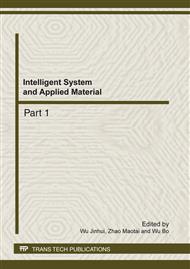p.1150
p.1156
p.1162
p.1167
p.1172
p.1176
p.1181
p.1186
p.1191
Design of Flow Simulation Subsystem of Ground Simulation Test for Aircraft Fuel System
Abstract:
Flow simulation subsystem of ground simulation test for aircraft fuel system aims to simulate fuel flow of engine. In a certain airplane fuel system, the flow scope is very broad. In order to ensure the control precision in the whole range, the method of subsection control and measuring has been put forward. A control algorithm based on fuzzy adaptive PID with two-degree of freedom has been adopted, since subsection control will bring out the switchover fluctuation phenomenon. The results of simulation show that this algorithm can realize the curve tracking of the wide-range flow and reduce the fluctuation in the flow switchover process. That is to say, this algorithm has a preferable control effect.
Info:
Periodical:
Pages:
1172-1175
Citation:
Online since:
February 2012
Authors:
Price:
Сopyright:
© 2012 Trans Tech Publications Ltd. All Rights Reserved
Share:
Citation:


